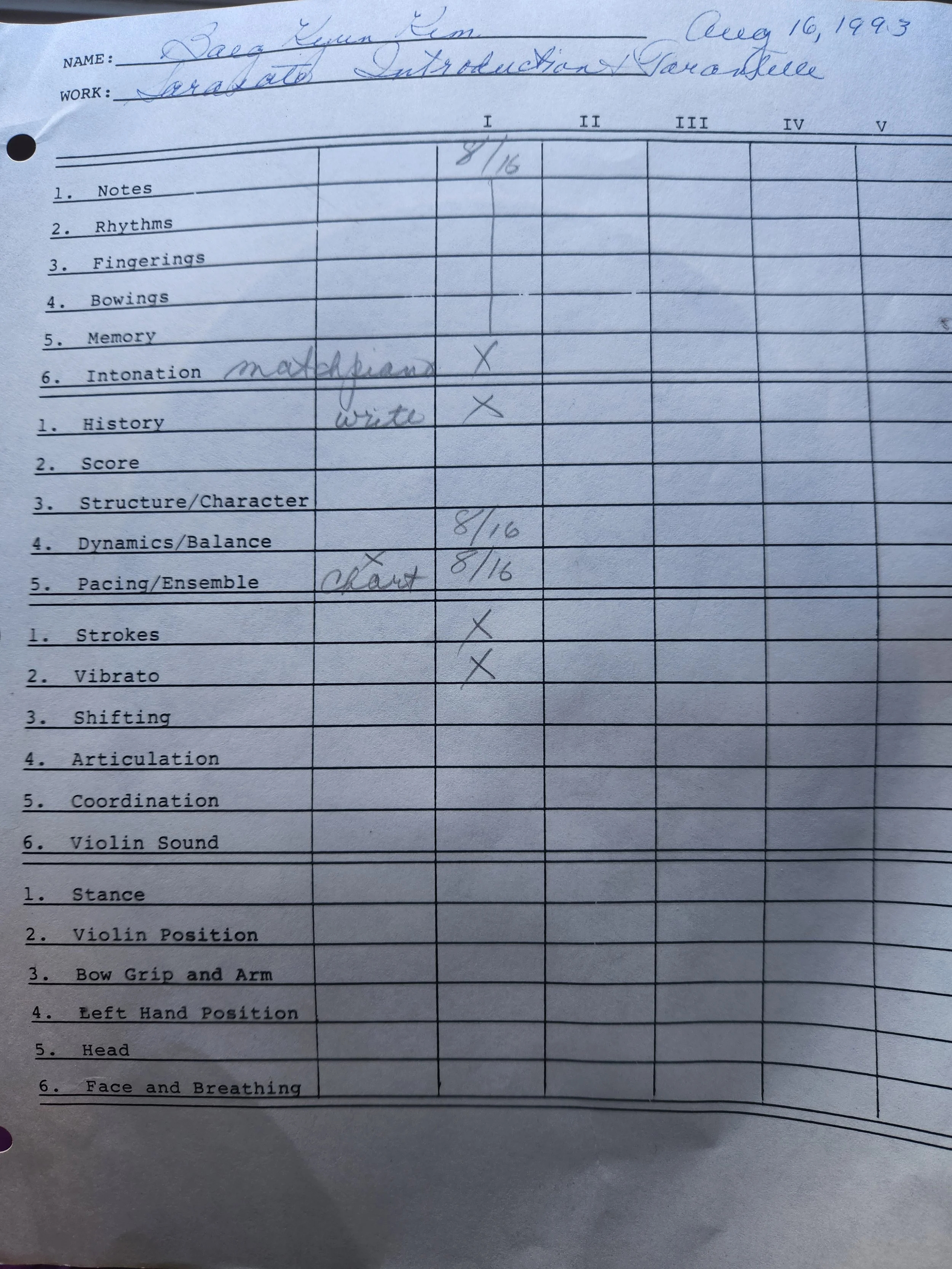How Did Dorothy DeLay Create World-Class Violinists? It Started With This Checklist.
Actual checklist from one of my lessons with Professor DeLay | The Juilliard School, August 16, 1993
Transform Your Practice: The Legendary Juilliard Lesson Checklist I Got from Dorothy DeLay
For any aspiring violinist, the name Dorothy DeLay evokes a sense of awe. As a legendary professor at The Juilliard School, she shaped generations of the world's greatest soloists. I was fortunate enough to be one of her students, and today I want to share a tool she used that was simple, powerful, and fundamental to my growth as an artist.
It’s an actual lesson checklist from her studio.
A Memory from Juilliard's 5th Floor
I can still picture it perfectly: August 16, 1993. I was an 11-year-old, standing in Ms. DeLay's famous studio on the 5th floor of Juilliard, my heart pounding as I ran through Sarasate’s Introduction & Tarantella.
After I finished, she showed me how I did on her checklist. You can see it in the image—the items marked with an 'X' were the areas that needed my immediate focus: intonation, history (yes, she insisted we research the composer and the story behind the music!), bow strokes, and vibrato. The items marked with the lesson date, '8/16,' were the ones I had successfully improved upon.
That simple piece of paper was my roadmap. It provided clarity, focus, and a way to measure my progress week after week.
Why This Checklist is So Powerful
This isn't just a piece of paper; it's a reflection of a teaching philosophy that produces results.
It Transforms The Overwhelming Task of "Getting Better": By breaking it into manageable components, it trains you to first isolate these elements and then integrate them with full awareness as you play.
It Creates Accountability: It gives you a visual tool to track your weaknesses and celebrate your strengths while working on your weaknesses.
It Fosters a Holistic Approach: Notice how "history" is on the list? Ms. DeLay taught us that being a musician was about more than just technique—it was about being a well-rounded artist. This also includes incorporating personal experiences, emotions (and heartbreaks!) to give uniqueness and character vs playing like a robot.
The decade I spent learning from Ms. DeLay, both at Juilliard and as a soloist at the Aspen Music Festival, shaped me into the artist and teacher I am today. Her emphasis on structured practice, critical listening, and deep musical understanding is the foundation of my own teaching studio.
I've created a clean, printable template of this checklist for you to use & enjoy in your own practice sessions. Use it to bring focus to your work, identify areas for improvement, and start practicing with the same clarity that guided Ms. DeLay’s students at her studio on 5th floor of The Juilliard School.
